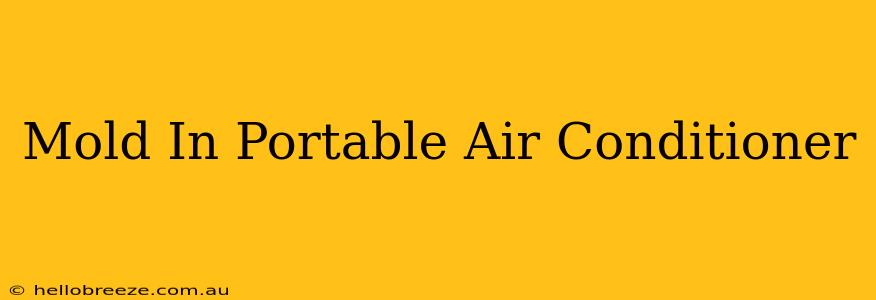Portable air conditioners are a lifesaver during hot summer months, offering cool relief in homes without central AC. However, these convenient units can become breeding grounds for mold if not properly maintained. This comprehensive guide will explore the causes of mold in portable air conditioners, effective prevention strategies, and safe removal techniques.
Understanding Mold Growth in Portable AC Units
Mold thrives in damp, dark environments, and portable air conditioners, with their humid internal components and enclosed spaces, provide the perfect breeding ground. Water condensation is a natural byproduct of the cooling process; if not properly addressed, this moisture can lead to mold and mildew growth, affecting both the unit's performance and your indoor air quality.
Common Mold Culprits:
- Condensation: Excessive humidity and water buildup within the unit are primary contributors to mold growth.
- Poor Ventilation: Insufficient airflow can trap moisture, creating an ideal environment for mold spores to germinate.
- Lack of Cleaning: Regularly cleaning your portable AC unit is essential to remove accumulated dust, debris, and mold spores.
- Filter Neglect: A dirty or clogged air filter restricts airflow, increasing humidity and promoting mold growth.
Preventing Mold in Your Portable Air Conditioner
Preventing mold is far easier (and cheaper!) than removing it. Implementing these proactive measures can significantly reduce your risk:
1. Regular Cleaning is Key:
- Frequency: Clean your portable air conditioner's filter at least every two weeks, or more frequently if you notice significant dust or debris buildup. For the entire unit, aim for a thorough cleaning at least once a month.
- Process: Carefully remove the filter and clean it using warm soapy water. Allow it to dry completely before reinstalling. Use a soft brush and a gentle cleaning solution (avoid harsh chemicals) to clean the unit's exterior and accessible internal components.
2. Proper Drainage:
- Check the Drain Pan: Ensure that the unit's condensate drain pan is empty and free of clogs. Regularly check for any leaks or water accumulation.
- Consider a Drain Hose: Some portable AC units offer the option to connect a drain hose to divert condensation away from the unit. This is a highly effective way to prevent water buildup.
3. Optimal Airflow:
- Placement: Position your portable AC unit in a well-ventilated area, ensuring adequate space around the unit for optimal airflow. Avoid placing it in confined spaces or near obstructions.
- Filter Maintenance: Regularly replacing or cleaning the air filter is crucial. A clogged filter restricts airflow and increases the risk of condensation.
4. Run the Fan Only Mode:
After turning off the cooling function, run the fan-only mode for about 30 minutes to help dry out the internal components and reduce moisture.
Removing Existing Mold from Your Portable Air Conditioner
If mold has already taken hold, you need to take immediate action. Always prioritize safety:
- Wear protective gear: Wear gloves, a mask, and eye protection to prevent inhalation or skin contact with mold spores.
- Proper ventilation: Ensure proper ventilation in the area where you're cleaning. Open windows and doors to allow fresh air to circulate.
- Mild Cleaning Solutions: Use a mixture of water and mild detergent, or a commercially available mold cleaner (following product instructions carefully). Avoid bleach unless explicitly recommended by the manufacturer of your AC unit.
Note: If you're uncomfortable cleaning the unit yourself, or if the mold infestation is extensive, it's best to contact a professional cleaning service specializing in mold remediation.
Conclusion: Keeping Your Portable AC Unit Mold-Free
Regular maintenance is your best defense against mold in your portable air conditioner. By following these preventative measures and addressing mold promptly if it does appear, you can ensure your unit provides cool, clean air throughout the summer months. Protecting your health and extending the life of your air conditioner starts with regular cleaning and proactive mold prevention.

